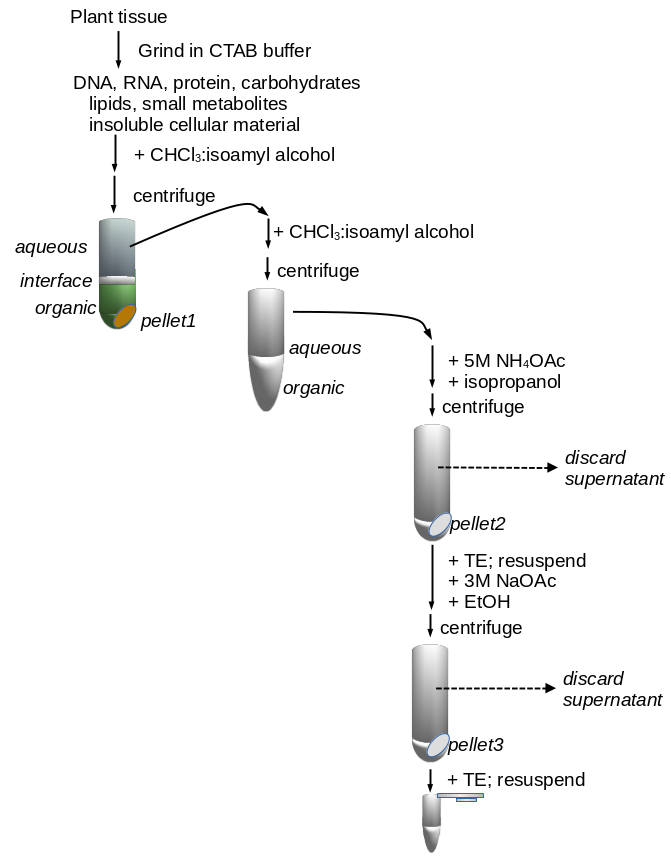For each of the following, state which components you think are in the different phases:
- aqueous
- interface
- organic
- pellet1
- supernatants
- pellet 3

Due date: Mon. April 7
Goal: To
extract genomic DNA from tobacco, and understand each of the
steps.
Lab Manual - GenomicDNAManual.pdf
To make it easier to carry out the procedure in the lab, the steps described in the lab manual are condensed into a worksheet, which also has blanks for filling in information that cannot be done in advance. GenomicDNAWorksheet.xlsx.
In place of the Spectrophotometric method in the manual, we will use the Nanodrop device to quantify your DNA. We will also not be doing the PCR assay.2. Watch the following videos which go into more depth about some parts of these procedures:
LibreOffice (GenomicDNATemplate.odt)Create a folder called GenomicDNALab to contain all files related to this lab eg. you might call it "GenomicDNALab". Save a copy of the Lab Report Template file to this folder.
Microsoft Word (GenomicDNATemplate.docx)
| Experiment numbers and
labeling Lab workers often overlook the need for precise labeling of materials such as tubes, boxes, filters etc. For any sample in the lab, it should be possible to unambiguously determine who produced it, what components and steps went into producing it, and when it was produced. The problem we face is that many of the materials we work with such as microfuge tubes, are small, allowing very little space for writing. One solution is to give each procedure we do in the lab a unique experiment number. For PLNT2530, we will use the following scheme. The Genomic DNA lab is the sixth lab in the term. The experiment number will therefore consist of your initials and the number '6'. For example, Dr. Fristensky's experiment number for this lab would be "BF6". All tubes would be labeled with the experiment number, plus additional information to describe the contents of the tube. By going to the worksheet for that experiment, you can find out what each tube is, based on the label.
When filling out the worksheet, make sure to put your experiment number on the worksheet, as well as on the tubes. |
| The flow chart at right gives a simplified
representation of the genomic DNA isolation protocol. For each of the following, state which components you think are in the different phases:
|
 |